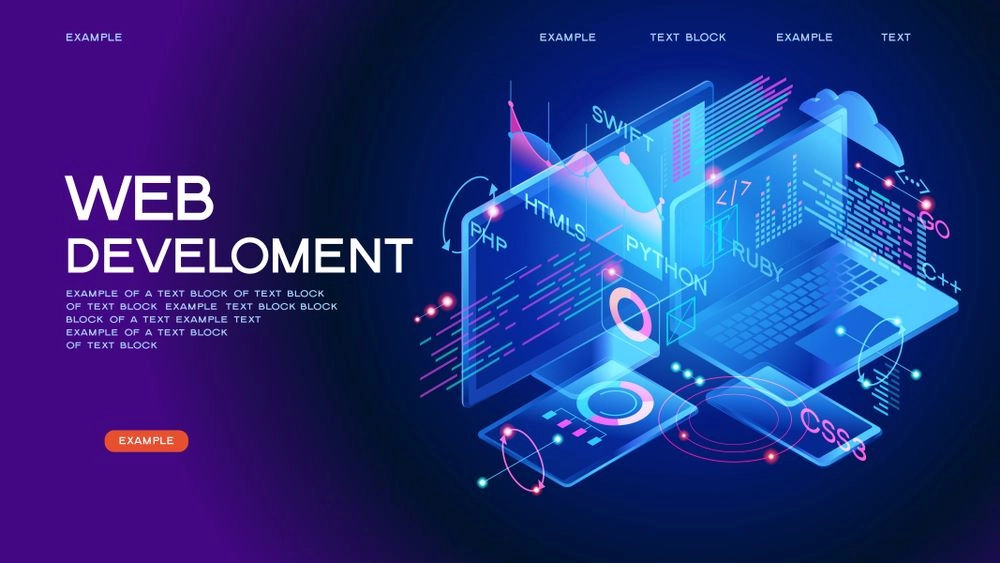Internal linking is one of the more overlooked concepts in search engine optimization. successful SEO experts use their strategies for increasing clients’ SEO of their sites. Here you’ll learn why internal linking plays such an essential part in an efficient method of SEO.
What Are Internal Hyperlinks (Links)
An internal hyperlink can be defined: it connects two pages within a website using an inbound hyperlink.
SEOs have identified various forms of links which are internal. Here is my breakdown of those types:
Navigation Links:
From the website’s Main page to footer links and breadcrumbs in the sidebar, content links (i.e., anchor texts and non-anchor texts).
Logistic links:
(internal links that contain anchor text such as “learn more,” “contact us,” etc.). Google does not specify all possible types of internal links, so understanding their usage will assist SEO strategies to meet business and SEO objectives more easily.
Why are internal links important?
What are the Advantages of Internal Links for SEO and Businesses? Why do internal links matter so much in SEO and business environments?
Answering that question is straightforward; links are the bedrock of the Internet. Internal links direct search engines and users to vital pages as well as those which generate revenue, making internal linking an essential SEO technique that cannot be replaced with any other approach.
Let’s dive deeper into an SEO concept called internal linking.
Internal links help search engines discover new pages.
As we all have learned from Google’s Guide, search engine bots rely on internal and external links to locate new websites. They crawl the Internet searching for relevant and useful information; since search engines must offer relevant and useful content that meets their user’s needs across an audience segment. New content could offer solutions or inspiration; ideas could come from ideas, concepts, opinions, viewpoints, products, services, as well as search terms themselves – helping search engines build search results pages (SERP) by offering relevant and valuable results that attract users by providing valuable and pertinent results that make SERP better or draw users by offering relevant and valuable results pages (SERPs).
Does connecting websites via the menu suffice?
Occasionally it does, but most often not. Internal links help the indexing process and improve website position in many ways. They allow visitors to locate pages more quickly.
First, anchor text helps search engines better comprehend the significance of web pages by providing some context.
For example, you can gain more information on protecting your site against mirror-proxy websites (an SEO technique that harms rankings and traffic) by researching how they function.

Here, “Protecting Your Site From Mirrors That Are Proxy,” tells search engines what the post’s content is about – an example of content hyperlinks. However, choosing an informative anchor text could create internal navigational links and thus improve navigational efficiency.
Search engines have long permitted web admins to flood their algorithms with anchor text for SEO purposes and continue to allow this practice today. Expert SEOs understand how to achieve this correctly using three elements such as descriptive anchor text (which must also provide informative value), content surrounding hyperlinks, website quality and even simple URLs that show complete URLs can help achieve both SEO and business goals.
Second, internal links transfer value (PageRank search signals, PageRank “link juice,” etc.) between sites by linking pages that perform their function – this allows search engines and users to understand which pages are most important for them.
Thirdly, search engines consider trust to be of utmost importance. Unfortunately, no concrete trust metrics or algorithms measure it; when linking to websites, this demonstrates your approval; but what happens if there’s no such link from your website to a page?
Are search engines considering these pages trustworthy without linking?
The above factors all impact how search engines index web pages. Search engines include pages referred to by other websites because their contents could benefit searchers, improving their rank.
As evidenced above, internal hyperlinks are integral to website SEO; however, they should not be seen as the only means.
Internal links help improve user experience.
Most people need to recognize the significance of user experience on web rankings and conversion rates today, yet a strong website informational structure will increase both visits and conversion rates.

Search engines do not understand which pages are essential to customers and visitors of your website, making a hierarchy vital for search engines to comprehend which are essential and can then be added to an index and ranked accordingly.
An effective informational architecture ensures that this website delivers an enjoyable user experience. Today, search engines place much more importance on user experience (UX) design than content alone when ranking websites; as such, they give extra points to those that offer great UX when ranking.
Effective information architecture will allow users to quickly locate the information they require on your site, increasing conversions or other actions and helping businesses meet their business goals. A well-organized, informative structure for websites aids them in this regard.
What are the rules of three clicks?
Flat web architecture design techniques are unnatural user experience techniques that harm SEO and reduce conversion rates. When creating website architecture or URLs, make sure you take into account user behaviour (search engine bots are similar). Many users won’t start visiting your website from its homepage; rather, they may arrive via product, service or subcategory pages from any level in its structure. Thus, consider expanding and scaling up your website as possible solutions. Numerous e-commerce websites launch with multiple categories and hundreds of items, but as the number of products increases, they require additional categories and subcategories to keep up. As an e-commerce website owner, you should anticipate that they must modify URLs accordingly to change their structure while adding redirects, as they hope everything works smoothly.
Combine structure with navigation on your website. A properly-crafted internal link enables visitors and search engine bot alike to reach any page on your site easily.
Internal linking myths
Myths about Internal Linking Many website owners and SEOs can be persuaded by misleading statements that do not abide by reality, Google patents, or research papers.
Using multiple links that point to the same location
Myth: Multiple links all pointing to one place occupying space on a page. According to Google’s search algorithm, if multiple links point at the same destination on one page, Google will only count one link as valid.
“The First Link” can refer to various elements on your site that link directly or indirectly back to its home page. These might include menu links or even your first paragraph – however, it’s generally best to link back infrequently to the same place.
The specific placement of links is important.
Myth: Higher-level links have more chance of being clicked.
Realistically, this can depend on many different variables. For instance, many users browse the Terms and Conditions page, but only some click on its top link; many web designers place such links within the footer instead to keep users from being taken from page one to another too quickly. Internal links pointing toward relevant paragraphs provide greater user value than direct navigational linkages between paragraphs.
Internal links reduce your website bounce rate
.Myth: Internal links reduce website bounce rate
Truth: Internal links tend to encourage users to stay on a website longer and show Google that the content is valued by visitors, which could boost the rankings of websites with such links.
Furthermore, its success depends on various other considerations. For instance, visitors needing information quickly can use internal links as a shortcut – this helps shorten the time spent on the website while increasing satisfaction.
The bounce rate and duration of your website depend on the experience you wish to create for visitors.
The right number of internal links
Myth: Internal Links Aren’t Necessarycit The correct number of links within an internal website is determined by its informational content.
Internal links should only be utilized if they provide value to users of your website. When they do become necessary, use them accordingly.
Use the “nofollow” attribute to save Page Rank.
Myth: Utilizing the “nofollow” feature to secure Page Ranking… [Stop Here] Using nofollow attribute within websites to alter Page Rank [Page Rank Sculting].
SEO professionals may use nofollow attributes as an unwise practice that could seriously undermine a site’s SEO efforts. A “nofollow” attribute means search engines won’t be able to navigate directly to this URL or discover its value or content, even though an unimportant site might require this treatment. Crawlers visit these websites regularly to evaluate them more thoroughly – the “nofollow” tag suggests webmaster disapproval or potential sponsors behind them may be responsible.
Remove internal links to unimportant pages.
Myth: Eliminate internal links that are irrelevant to pages
Fact: To improve search engine visibility and traffic levels, it may be advisable to delete internal links to irrelevant websites (old blogs, those receiving little traffic from search engines etc.).
Content is vitally important, yet many SEOs and others stress its vitality. But experts advise against linking directly to it because even old blog posts may alter how search engines evaluate it from search engine results. By eliminating internal links that don’t matter as much to search engines, owners may feel more assured in their content’s legitimacy, and search engines can better assess it correctly.
Advantages of Internal Links:
When website owners inquire about ranking their site within SEO or social media forums, they often receive advice like, “Use external hyperlinks”.
There is no scientific study that establishes which links are more effective. Search engines recognize them all as hyperlinks.
Internal links offer several distinct advantages over their external counterparts.
Internal links are free for website owners to include on their pages; no payment must be made to link internally.
Website owners have the flexibility of using internal links whenever and whenever necessary. In addition, website owners can quickly modify anchor text when necessary.
Search engines utilize specific algorithms to evaluate external links, which SEOs often employ as filters for external hyperlinks. Based on these algorithms, search engines could transmit less value (search signals) to linked pages or ignore them altogether. Impacting rankings and indexing of linked pages significantly. Unfortunately, you never know which external link has the greatest significance. Linkbuilders often create numerous external links which search engines would ignore altogether.
Search engines do not utilize specific strategies for linking internal pages, meaning each internal link could provide value to its destination page.
Internal links sometimes replace external ones when driving traffic to your website via referrals. However, internal links are more effective for conversion and SEO purposes than their counterparts.
Conclusions
Internal links can increase SEO both in terms of conversion rate and speed. Their efficacy depends on factors like website informational architecture structure and page number and an SEO expert’s skillset.
Internal linking for SEO and business goals requires expertise and an understanding of user Experience design. Relying solely on links provided by other sites could prove risky; using your links provides more reliability.




